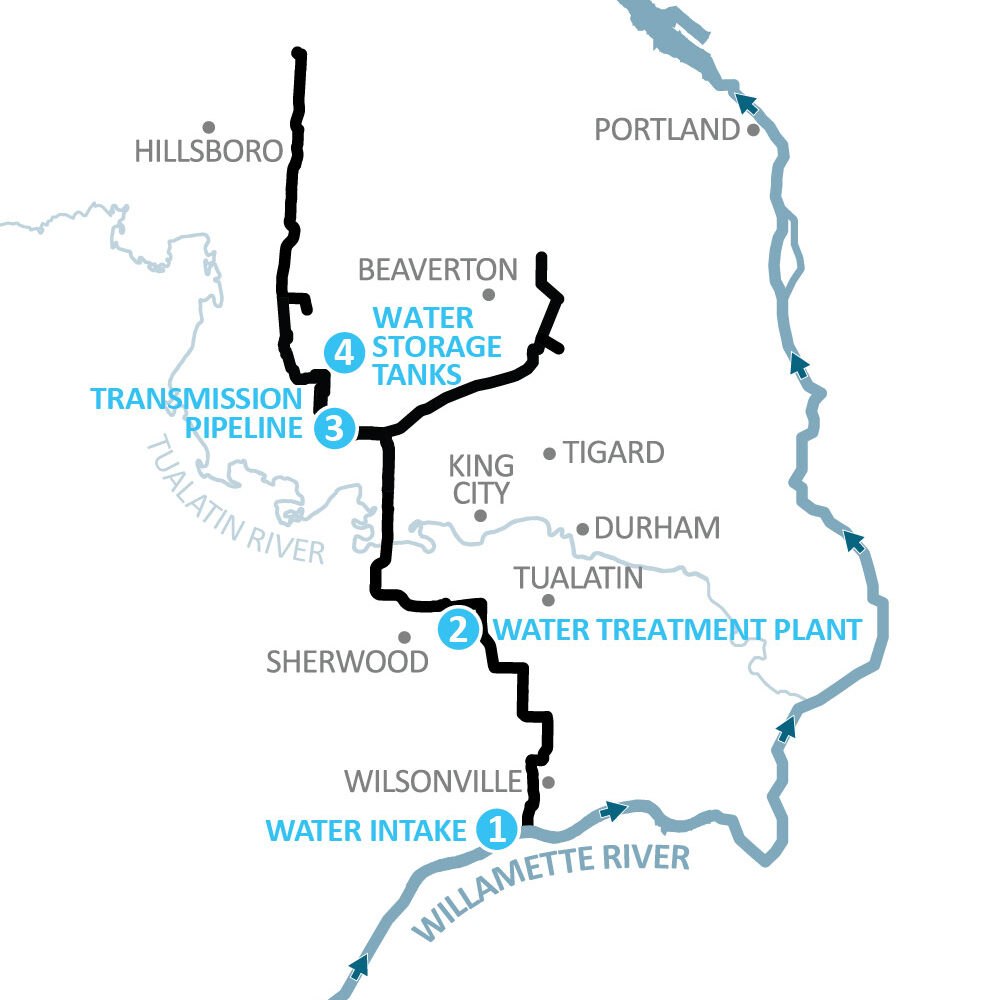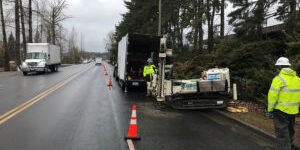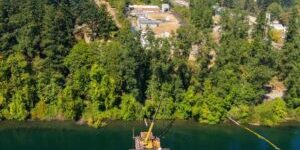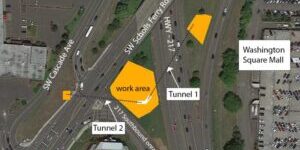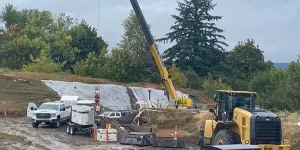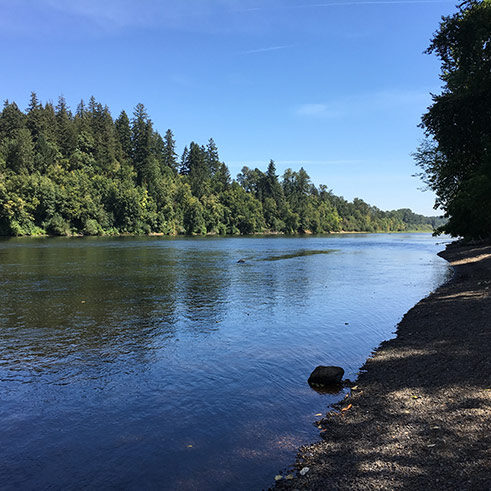
By
(July 10, 2015)
But that’s exactly what’s getting underway in southern Tualatin as work gears up on the last vestige of the fabled but fated Westside Bypass.
“I’m not trying to overstate this or be melodramatic,” said Lou Ogden, Tualatin’s mayor for the past 20 years. “But this is a huge deal for both us and, from a transportation standpoint, the most important thing to happen to Tualatin during my time here.”
When completed in 2018, the extension of Southwest 124th Avenue should scratch off several important tasks from the region’s transportation-planning to-do list. Chief among those are:
- Reduce congestion on terminally traffic-clogged Southwest Tualatin-Sherwood Road.
- Provide a far more direct link between Interstate 5 and Oregon 99W.
- Dramatically improve access for big trucks to burgeoning industrial areas in Tualatin, Sherwood and Wilsonville.
- Help solve the decades-old challenge of separating and buffering Tualatin’s southern residential area from Wilsonville’s northern industrial portion.
In addition, the 1.3-mile-long project will accommodate the first piece of a 30-mile-long water transmission line linking Wilsonville’s Willamette River water-treatment plant with 300,000 residential and industrial customers in Hillsboro.
Construction is scheduled to get underway later this summer on the $30 million project, which is funded largely by Washington County’s Major Streets Transportation Improvement Program.
Not lost on those with long memories is that the road, which arcs between Southwest Grahams Ferry Road in Tualatin to a northern terminus at Southwest 124th Avenue near Sherwood, represents the last remnant of the Westside Bypass.
The bypass, first planned in the early 1980s, was envisioned as a high-speed beltway following a semicircular route flaring off I-5 near Tualatin, circling out toward Beaverton and veering back toward Oregon 217.
Early plans called for the bypass to continue in a northeast direction through Washington County, where it would eventually travel down to U.S. 30 south of Scappoose and, via a new bridge, cross the Willamette River into Vancouver.
Rising cost projections, political and environmental obstacles and infill development in the proposed route’s path killed it by the mid-1990s.
Out of the ashes of that collapse came plans for a parkway connecting Interstate 5 in north Wilsonville with Oregon 99W in Sherwood. Now, with future expansions planned at both ends of the current Southwest 124th Avenue project, significant portions of that connector may eventually be realized, according to some.
“We really do see this as the first piece of an I-5/99 connector,” Stephen Roberts, a Washington County transportation spokesman, said. “There is considerable work left to be done, but this is still an important initial step.”
Ogden, however, cautioned that this project differs significantly from the limited-access roadway plans surrounding the earlier I-5/99 connector proposal.
“We won’t have that free-flowing movement of traffic emulating a true parkway,” he said. “This is not in any way a replication or replacement for the connector.”
The distinction is important, he said, because residents in southern Tualatin made it amply clear last time around that a high-speed parkway wasn’t what they had in mind for an area rich in new houses, schools and parks.
In December 2004, in fact, hundreds of aggrieved residents packed into Tualatin High School’s gymnasium, telling Ogden exactly how they felt about a noisy connector splitting their neighborhoods.
Afterward, Ogden defending the public process leading to that meeting as “transparent,” but added, “An effort that started off correctly ended up with about 1,000 people wanting to lynch me.”
A few groans have been heard this time around, he said, but most in the area seem satisfied that a configuration limited to two lanes, coursing a route well south of most existing housing, won’t harm neighborhood livability.
The extension, meanwhile, also will kick off construction of a water pipeline stretching from the Willamette River to Hillsboro.
The Tualatin Valley Water District and the city of Hillsboro, joint partners in the project, are taking advantage of the road construction to lay a middle portion of the planned 30-mile-long line.
Once installed, the 66-inch-wide pipe will remain untouched until the rest of the $1 billion project gets underway in 2020. The line isn’t expected to be finished until 2026.
“We certainly didn’t want to have to tear up a road to put in a pipe after that new road just went in,” said Todd Heidgerken, Willamette Water Supply Program manager. “Starting early just made sense.”

